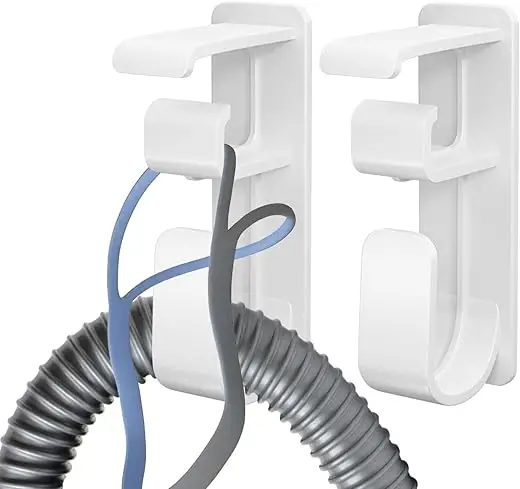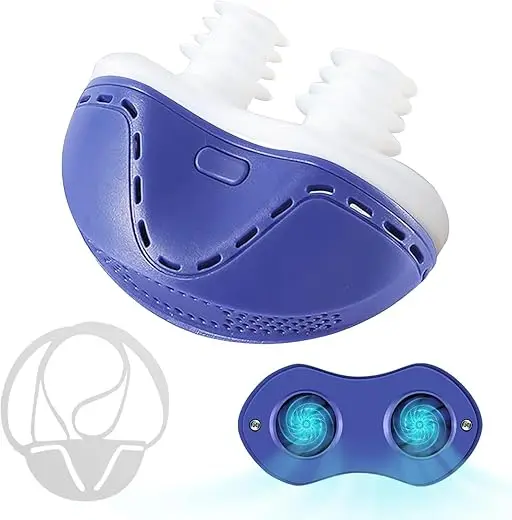The Frustrating Reality: When Tests Don’t Match Your Symptoms
Up to 30% of people with clear sleep apnea symptoms receive negative or “normal” sleep study results, leaving them confused, frustrated, and still suffering. This doesn’t mean your symptoms aren’t real – it often means the test failed to capture your condition. False negatives occur due to first-night effect, REM-related apnea, positional variations, mild upper airway resistance syndrome, or simply having a “good night” during testing.
You know something’s wrong. Your partner hears you stop breathing. You wake up exhausted despite sleeping eight hours. You have every classic symptom of sleep apnea. Yet your sleep study came back “normal” or “mild” with an AHI below the treatment threshold. This comprehensive guide explains why sleep studies miss real sleep apnea, what conditions mimic OSA, and most importantly, what to do when you’re caught between obvious symptoms and a negative test.
Why Sleep Studies Fail: The Testing Limitations
The First-Night Effect
What Happens:
- Strange environment suppresses normal sleep
- Anxiety about testing changes breathing patterns
- Lighter sleep may reduce apnea events
- REM sleep (where apnea is often worst) reduced
- You sleep better or worse than usual
Impact on Results:
- 20-30% false negative rate
- AHI underestimated by 10-15 points average
- Mild cases appear normal
- Moderate cases appear mild
- REM-related OSA completely missed
Testing Limitations
Home Sleep Tests (HST) Miss:
- Central sleep apnea
- Mild sleep apnea
- REM-related apnea
- Upper airway resistance syndrome
- Arousals without oxygen drops
- Complex sleep disorders
Even Lab Studies Miss:
- Position-dependent apnea if you don’t sleep in usual position
- Alcohol-related apnea (can’t drink before test)
- Medication effects (sedatives avoided)
- Stress-induced apnea
- Menstrual cycle variations (women)
The “Good Night” Phenomenon
Why It Happens:
- Exhaustion makes you sleep deeper
- Different bed/pillow changes airway
- Forced back sleeping in lab
- No alcohol effect
- Different room temperature/humidity
Patient Reports: “The one night I needed to show my symptoms, I slept better than I had in months!”
Conditions That Mimic Sleep Apnea
Upper Airway Resistance Syndrome (UARS)
The Hidden Epidemic:
- Partial airway obstruction without full apneas
- Normal oxygen levels maintained
- Frequent arousals from breathing effort
- Standard studies often miss it
- Affects younger, thinner patients often
Symptoms Identical to OSA:
- Excessive daytime fatigue
- Unrefreshing sleep
- Morning headaches
- Cognitive dysfunction
- Mood problems
Why Tests Miss It:
- No oxygen desaturation
- AHI appears normal
- Requires special pressure monitoring (Pes)
- Arousals too subtle for standard scoring
REM-Related OSA
The Selective Apnea:
- Normal breathing in non-REM sleep
- Severe apnea only during REM (20-25% of night)
- Overall AHI diluted by normal periods
- May fall below treatment threshold
- More common in women
Why It’s Missed:
- First-night effect reduces REM
- Home tests may miss REM periods
- Short studies might not capture enough REM
- Overall AHI misleadingly low
Positional OSA
The Position Problem:
- Severe apnea on back
- Normal breathing on side
- Lab forces back sleeping
- Home test position varies
- Overall AHI averaged across positions
Testing Issues:
- Didn’t sleep in problematic position
- Position sensor malfunction
- Natural position avoiders
- Mixed position results diluted
Complex Presentations Often Missed
Central Sleep Apnea
Why It’s Different:
- No obstruction visible
- No snoring typically
- Home tests can’t detect
- Requires specialized scoring
- Often mild but symptomatic
Missed Because:
- Looks like “normal” breathing pauses
- No respiratory effort measured on HST
- Confused with normal variation
- Requires specific expertise
Sleep State Misperception
The Paradox:
- Feel awake but actually sleeping
- Micro-arousals not remembered
- Sleep quality poor despite “normal” study
- Conscious awareness during light sleep
- Anxiety amplifies perception
Chronic Fatigue Overlap
When Both Exist:
- Sleep apnea mild but present
- Chronic fatigue amplifies symptoms
- Test shows mild, symptoms severe
- Treatment threshold not met
- Both conditions need treatment
The Gender Factor: Why Women’s Tests Are Often Negative
Hormonal Influences
Menstrual Cycle Effects:
- Follicular phase: Less apnea
- Luteal phase: More apnea
- Test timing matters
- Variation not captured
- Single night misleading
Menopause Transition:
- Fluctuating hormones
- Inconsistent symptoms
- Night-to-night variation
- Test may catch “good” night
- Progressive worsening missed
Different Presentation
Women’s Patterns:
- REM-predominant (easily missed)
- Partial obstruction vs complete
- Flow limitation without apnea
- More arousals, less desaturation
- Symptoms at lower AHI
When Symptoms Don’t Match Numbers
Symptomatic “Mild” OSA
The Threshold Problem:
- Insurance requires AHI ≥15
- You have AHI 8-12
- Symptoms severe despite “mild” rating
- Quality of life significantly impacted
- Treatment denied based on numbers
Why Mild Isn’t Mild:
- Individual variation in tolerance
- Cumulative effects over years
- Sensitive to sleep disruption
- Other factors compound effect
- Young people more affected
The Borderline Dilemma
AHI 4-5 Range:
- Technically “normal” (<5)
- But 4x normal events
- Symptoms clearly present
- Progressive condition
- Early intervention beneficial
Fighting for Treatment:
- Document symptom severity
- Track partner observations
- Show work/life impact
- Request second opinion
- Consider self-pay options
Alternative Explanations for Your Symptoms
Sleep Disorders That Aren’t Apnea
Periodic Limb Movement Disorder:
- Leg movements fragment sleep
- Similar daytime fatigue
- Partner notices movement
- Separate from sleep apnea
- Different treatment needed
Narcolepsy Type 2:
- Excessive daytime sleepiness
- No cataplexy
- Sleep study appears normal
- MSLT test needed
- Often misdiagnosed
Idiopathic Hypersomnia:
- Excessive sleep need
- Unrefreshing despite duration
- No breathing issues
- Difficult to diagnose
- Stimulants may help
Medical Conditions
Thyroid Disorders:
- Hypothyroidism mimics OSA
- Fatigue, weight gain, snoring
- Check TSH, T3, T4
- Treatment very different
- Can coexist with OSA
Chronic Fatigue Syndrome:
- Post-exertional malaise
- Not improved with sleep
- Multiple system involvement
- No specific test
- Management complex
Depression/Anxiety:
- Sleep disruption common
- Fatigue prominent
- Early morning awakening
- Psychological symptoms
- May coexist with OSA
What to Do With a Negative Test
Immediate Actions
Don’t Give Up:
- Request detailed test results
- Look at RDI not just AHI
- Check arousal index
- Review oxygen patterns
- Ask about UARS
Document Everything:
- Video your sleep
- Partner sleep diary
- Symptom severity scale
- Work impact examples
- Quality of life measures
Getting a Second Opinion
When to Retest:
- First test was home study → get lab study
- Lab study → try different lab
- Significant weight change
- Symptoms worsening
- New symptoms developing
Different Test Types:
- WatchPAT (measures peripheral tone)
- High-resolution pulse oximetry
- Multiple night home testing
- Maintenance of Wakefulness Test
- Specialized UARS evaluation
Alternative Diagnostic Approaches
Extended Monitoring:
- 3-7 night home studies
- Smartphone apps with recording
- Continuous pulse oximetry
- Sleep position monitoring
- Heart rate variability tracking
Specialized Testing:
- Esophageal pressure monitoring (Pes)
- Drug-induced sleep endoscopy (DISE)
- Upper airway imaging
- Acoustic pharyngometry
- Sleep MRI
Treatment Options Despite Negative Test
Empirical CPAP Trial
When Justified:
- Strong clinical suspicion
- Partner witnessed apneas
- Significant symptoms
- Other causes ruled out
- Patient motivated
How to Get It:
- Find sympathetic sleep doctor
- Document symptom severity
- Offer to pay out-of-pocket
- Rent before buying
- Track improvement meticulously
Alternative Treatments
Oral Appliances:
- Lower threshold for treatment
- May help UARS
- Dentist may be more flexible
- Insurance sometimes covers
- Worth trying
Positional Therapy:
- If position-dependent suspected
- Tennis ball technique
- Positional devices
- Smart position trainers
- No prescription needed
Myofunctional Therapy:
- Strengthens airway muscles
- Helps mild cases
- No diagnosis required
- Speech therapist provided
- Growing evidence base
Lifestyle Interventions
Always Beneficial:
- Weight loss if overweight
- Avoid alcohol/sedatives
- Sleep position optimization
- Nasal breathing training
- Stress management
Working With Your Doctor
Making Your Case
Bring Evidence:
- Partner letter/testimony
- Video of breathing pauses
- Symptom diary (2+ weeks)
- Work performance documentation
- Family history information
Use Specific Language: “I understand my AHI was below threshold, but my symptoms are significantly impacting my life. I’d like to discuss:
- Possible UARS
- REM-related OSA
- Empirical treatment trial
- Additional testing options”
Finding the Right Provider
Red Flags (Find New Doctor):
- “Lose weight and come back”
- “It’s just stress”
- “Numbers don’t lie”
- Won’t discuss options
- Dismissive attitude
Green Flags (Good Provider):
- Listens to symptoms
- Explains test limitations
- Offers alternatives
- Considers quality of life
- Willing to trial treatment
Success Stories: Negative Test, Positive Outcome
The Teacher, 34
“AHI was 4, told I was ‘normal.’ Found doctor who diagnosed UARS, got CPAP anyway. Life changed completely. That ‘normal’ test almost cost me my career.”
The Executive, 45
“Three negative home studies. Finally got lab study with esophageal pressure monitoring. Severe UARS found. Treatment saved my marriage and job.”
The Athlete, 28
“Sleep study showed AHI 6. Told to lose weight (I was already fit). Self-paid for CPAP trial. Energy and performance transformed. Sometimes you have to fight for treatment.”
The Mom, 38
“Negative test but classic symptoms. Turned out testing was during wrong part of menstrual cycle. Retested two weeks later: moderate OSA. Timing matters!”
The Insurance Battle
Appealing Denials
Building Your Appeal:
- Get doctor’s letter of medical necessity
- Document failed conservative treatment
- Show symptom severity impact
- Include partner testimony
- Reference studies on mild OSA risks
Alternative Funding:
- HSA/FSA funds
- Payment plans
- Used equipment (with new supplies)
- Rent-to-own programs
- Clinical trials
When It’s Really Not Sleep Apnea
Accepting Other Diagnoses
Next Steps:
- Comprehensive medical evaluation
- Endocrine testing
- Neurological assessment
- Psychiatric evaluation
- Autoimmune screening
Stay Open to:
- Multiple conditions
- Evolving diagnosis
- Combined treatments
- Lifestyle factors
- Psychological components
Your Action Plan
Week 1: Investigate
- Get full test report
- Review with doctor
- Document symptoms
- Research alternatives
- Find support groups
Week 2-3: Advocate
- Seek second opinion
- Request additional testing
- Explore empirical trial
- Check insurance options
- Consider self-pay
Month 2: Act
- Start treatment (any available)
- Track response carefully
- Adjust approach
- Build evidence
- Stay persistent
The Bottom Line: Trust Your Body
A negative sleep test doesn’t invalidate your symptoms. Sleep studies, while useful, are imperfect tools that capture one night’s snapshot of a complex condition. Many people with real sleep-disordered breathing receive negative results, especially women, younger people, and those with variant presentations.
If you have symptoms, keep pushing for answers. Whether it’s undetected sleep apnea, UARS, or another condition, you deserve treatment. Don’t let a number on a report condemn you to years of unnecessary suffering.
Remember:
- Tests have limitations
- False negatives are common
- Symptoms matter more than numbers
- Treatment can proceed without perfect diagnosis
- Persistence pays off
Your experience of exhaustion, poor sleep, and daily struggle is valid regardless of what any test shows. Keep advocating for yourself until you get the help you need.
Never accept “normal” test results if your symptoms persist. Find a healthcare provider who will look beyond the numbers and treat the person, not just the test results.



